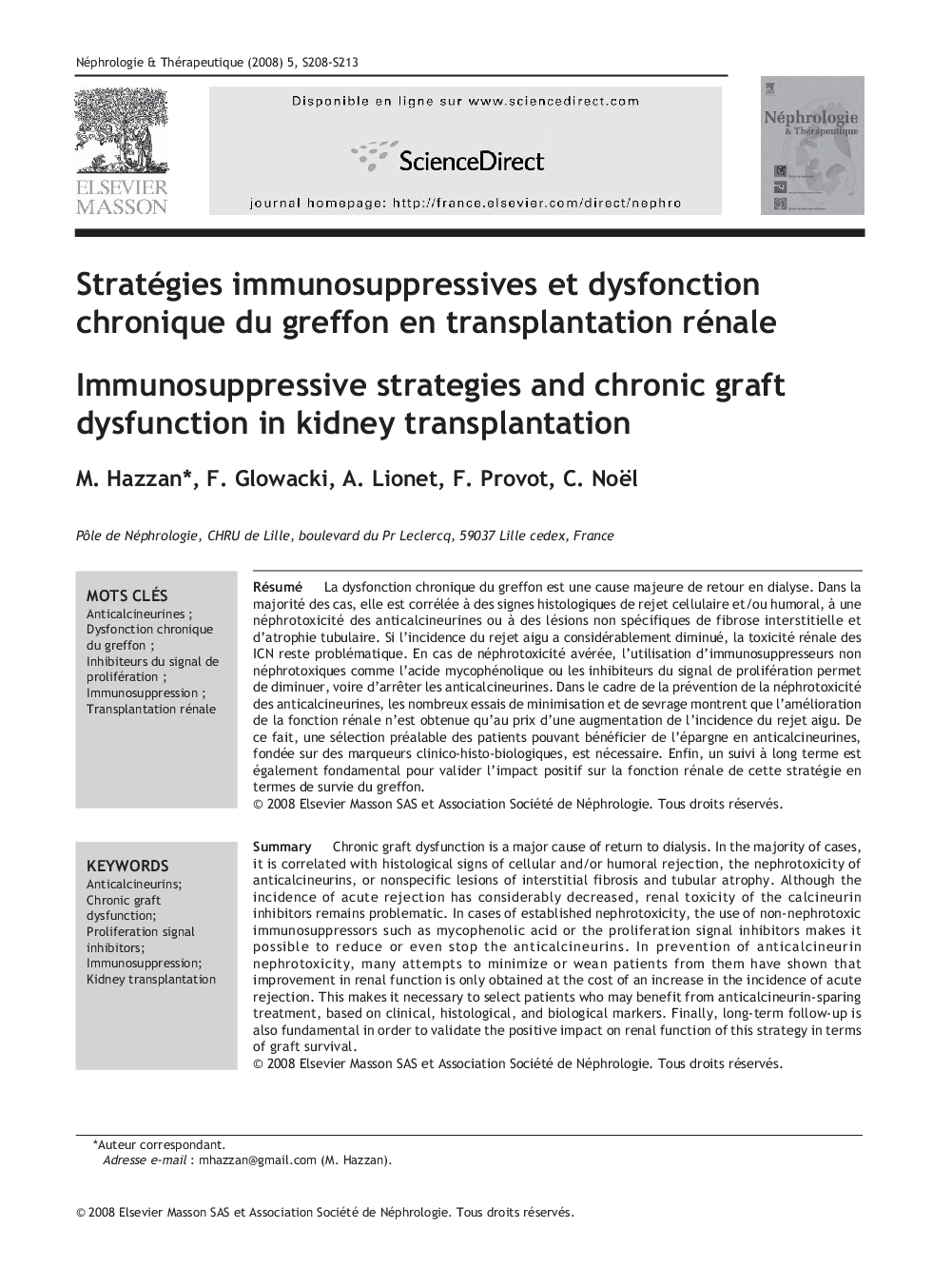| کد مقاله | کد نشریه | سال انتشار | مقاله انگلیسی | نسخه تمام متن |
|---|---|---|---|---|
| 3895737 | 1250179 | 2008 | 6 صفحه PDF | دانلود رایگان |

RésuméLa dysfonction chronique du greffon est une cause majeure de retour en dialyse. Dans la majorité des cas, elle est corrélée à des signes histologiques de rejet cellulaire et/ou humoral, à une néphrotoxicité des anticalcineurines ou à des lésions non spécifiques de fibrose interstitielle et d’atrophie tubulaire. Si l’incidence du rejet aigu a considérablement diminué, la toxicité rénale des ICN reste problématique. En cas de néphrotoxicité avérée, l’utilisation d’immunosuppresseurs non néphrotoxiques comme l’acide mycophénolique ou les inhibiteurs du signal de prolifération permet de diminuer, voire d’arrêter les anticalcineurines. Dans le cadre de la prévention de la néphrotoxicité des anticalcineurines, les nombreux essais de minimisation et de sevrage montrent que l’amélioration de la fonction rénale n’est obtenue qu’au prix d’une augmentation de l’incidence du rejet aigu. De ce fait, une sélection préalable des patients pouvant bénéficier de l’épargne en anticalcineurines, fondée sur des marqueurs clinico-histo-biologiques, est nécessaire. Enfin, un suivi à long terme est également fondamental pour valider l’impact positif sur la fonction rénale de cette stratégie en termes de survie du greffon.
SummaryChronic graft dysfunction is a major cause of return to dialysis. In the majority of cases, it is correlated with histological signs of cellular and/or humoral rejection, the nephrotoxicity of anticalcineurins, or nonspecific lesions of interstitial fibrosis and tubular atrophy. Although the incidence of acute rejection has considerably decreased, renal toxicity of the calcineurin inhibitors remains problematic. In cases of established nephrotoxicity, the use of non-nephrotoxic immunosuppressors such as mycophenolic acid or the proliferation signal inhibitors makes it possible to reduce or even stop the anticalcineurins. In prevention of anticalcineurin nephrotoxicity, many attempts to minimize or wean patients from them have shown that improvement in renal function is only obtained at the cost of an increase in the incidence of acute rejection. This makes it necessary to select patients who may benefit from anticalcineurin-sparing treatment, based on clinical, histological, and biological markers. Finally, long-term follow-up is also fundamental in order to validate the positive impact on renal function of this strategy in terms of graft survival.
Journal: Néphrologie & Thérapeutique - Volume 4, Supplement 3, October 2008, Pages S208-S213